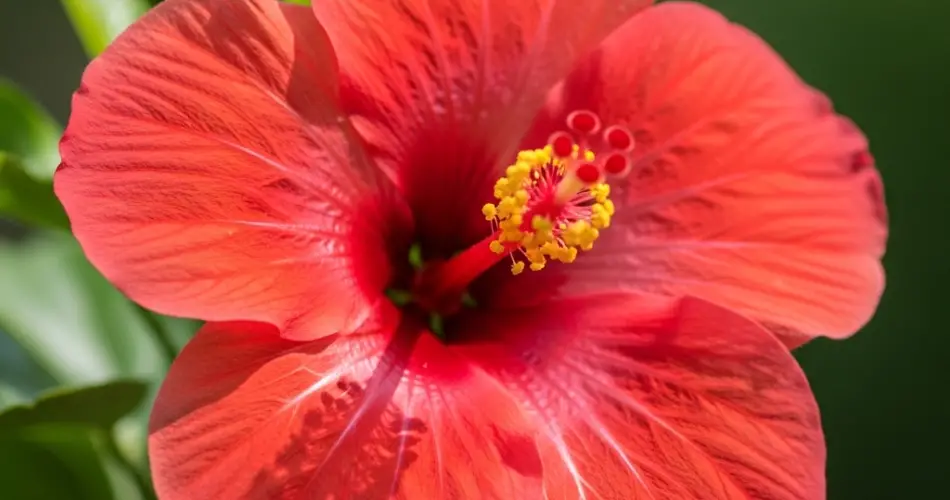Hibiscus plants are beloved for their large, colorful blooms that bring a tropical touch to gardens, patios, and balconies. Whether you’re growing hardy hibiscus in the garden or tropical hibiscus in containers, getting them to bloom is only part of the goal—the real challenge is keeping those stunning flowers coming throughout the season. With the right care, you can encourage your hibiscus to bloom longer, more frequently, and with greater vibrancy. Here are the best tips to help your hibiscus thrive and stay in bloom for as long as possible.
1. Provide Plenty of Sunlight
Hibiscus plants are sun lovers. To produce flowers consistently, they need at least 6 hours of direct sunlight daily. Tropical hibiscus, in particular, thrives in full sun, while hardy varieties can tolerate partial shade but still need a good amount of light.
Tip: If you’re growing hibiscus indoors or in a shaded spot, consider moving it to a sunnier location or supplementing with a grow light to mimic natural sunlight.
2. Water Regularly, But Wisely
Hibiscus likes consistent moisture but doesn’t appreciate soggy roots. Overwatering can lead to root rot and poor flowering, while underwatering causes buds to drop before they open.
Tip: Water your hibiscus when the top inch of soil feels dry. During hot weather, daily watering might be necessary, especially for potted plants. Ensure containers have drainage holes and avoid letting them sit in standing water.
3. Use the Right Fertilizer
To keep your hibiscus blooming, feed it with a balanced fertilizer that supports flower production. Look for a formulation with a slightly higher potassium (K) content compared to nitrogen (N), as too much nitrogen encourages leaf growth at the expense of blooms.
Tip: A fertilizer with an N-P-K ratio like 10-10-20 or 12-8-16 is ideal. Apply it every 2 to 4 weeks during the growing season. Avoid over-fertilizing, which can lead to salt buildup in the soil.
4. Prune at the Right Time
Pruning not only shapes your hibiscus but also encourages new growth and more blooms. Cutting back old or leggy stems allows the plant to redirect energy into producing flowers.
Tip: Prune in early spring before new growth starts. Remove dead, damaged, or weak branches, and trim leggy stems to encourage bushier growth. Avoid heavy pruning during blooming season, as it may reduce flower production temporarily.
5. Pinch Back for Bushier Growth
In addition to seasonal pruning, pinching back new growth can encourage your hibiscus to grow more branches—and more branches mean more potential flower sites.
Tip: Simply use your fingers to pinch off the tips of young stems during early growth stages. Do this every few weeks to stimulate fuller growth.
6. Keep Temperatures Consistent
Hibiscus is sensitive to temperature extremes. Tropical varieties prefer temperatures between 60°F and 85°F (15°C to 29°C). When exposed to temperatures outside this range—especially cold—they may stop blooming or drop buds.
Tip: Protect your plant from sudden cold snaps by bringing potted hibiscus indoors. Avoid placing it near air conditioners, heaters, or drafty windows, which can stress the plant.
7. Watch for Pests and Diseases
Aphids, spider mites, and whiteflies are common pests that can sap energy from your hibiscus and prevent it from blooming. Fungal diseases like powdery mildew can also affect flower production.
Tip: Inspect your plant regularly. Use insecticidal soap or neem oil for pest control, and ensure good air circulation to prevent fungal problems. Remove any affected leaves or flowers promptly.
8. Repot When Necessary
If your potted hibiscus seems to stop blooming or has become root-bound, it may be time to repot. Limited root space restricts nutrient uptake and water absorption.
Tip: Repot your hibiscus every 2–3 years into a slightly larger container with fresh potting mix. Use a well-draining soil blend rich in organic matter.
9. Deadhead Spent Flowers
Removing faded blooms helps direct the plant’s energy toward producing new flowers rather than seed production.
Tip: Gently snap or cut off old blooms as soon as they begin to wilt. This keeps the plant tidy and encourages continuous flowering.
10. Give It a Rest Period
Even with great care, hibiscus plants sometimes need a short rest. Tropical hibiscus often slows down in winter, while hardy types go dormant.
Tip: Reduce watering and stop fertilizing during the plant’s rest phase. Resume regular care in spring when growth picks up again.
Final Thoughts
Keeping your hibiscus blooming longer isn’t about one single action—it’s the result of consistent, well-rounded care. By providing ample sunlight, proper watering, the right nutrients, and regular maintenance, your hibiscus can reward you with wave after wave of vibrant blooms. With a bit of attention and patience, you’ll enjoy a lush, colorful display that brightens your space for months on end.



